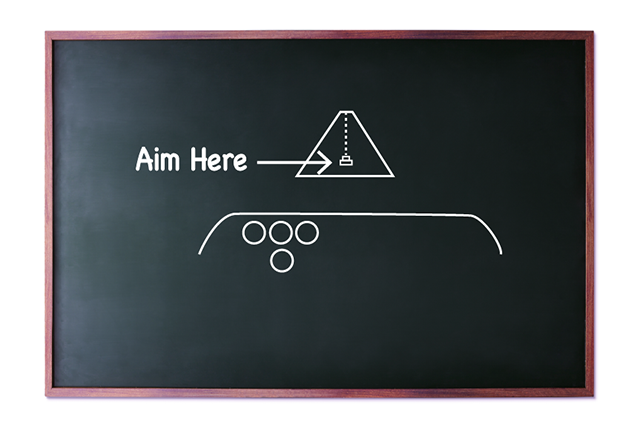
Flying aircraft is, for the most part, an exacting science of aerodynamics, physics, meteorology and geometry. We do our best to learn and understand what needs to be understood, but we train and memorize rote procedures to make sure we get it right, every time. There is, however, an exception to this scientific approach to flying: the landing flare. We are told that what happens in the last 20 or 30 ft. of flight is an art. Magic, really. We all remember that one day during training when the light clicked on, and we had it, we knew how to land. But then we lost it, and "pranged" one on. These days the same thing happens on the line: One day you have the magic, the next day you don’t. It is an art they say.
After a lifetime of research, I am here to tell you that the landing flare can be broken into smaller, achievable steps that can be explained by science. Understand the science, and your landings will become more consistently on speed, in the touchdown zone, and--dare I say it--more pleasing to your passengers.
Most of us intuitively understand that the scribblings of our first flight instructors on the well-worn chalkboards in our first flight schools were the knowledge we needed at the time to progress along our way to becoming professional pilots. But many of those axioms were actually folklore, taught by instructors who were taught by the generation before, and they from the generation before them. We may suspect some of these truisms are false, but we may not be sure why. If you want to take this journey from art to science, you will need to unlearn a few things you have been taught:
(1) If we keep our aimpoint stationary in the windshield, that is where our wheels will hit the runway.
(2) Once we lose sight of the aimpoint, it is time to flare.
(3) If we shift our aim to the horizon during the flare, we will be able to judge a proper touchdown at our aimpoint.
(4) The flare cannot be taught; it is a matter of feel learned through experience.
Folklore: If we keep our aimpoint stationary in the windshield, that is where our wheels will hit the runway.

When we started flying, be it in a single-engine Piper Cherokee, a single-engine Cessna 150, or something else, we were told to place a point on the runway on our windshield so it becomes stationary. Everything above it moves higher, everything below it moves lower. “Keep it right there,” we are told, “and that is where your wheels will end up.” This lesson is reinforced by the fact that it seems to work out that way. Left unsaid is that it sometimes works out that way because our wheels are actually aimed short and the act of flaring the airplane sometimes gets the wheels to where you were aiming. If you really “keep it right there,” what will happen is a part of the airplane will hit the runway (or short of the runway) before your eyes ever get to the aimpoint. “But that doesn’t matter,” your flight instructor would say if you brought that up, “the wheels are only a few feet behind you.”
We can examine the idea that the “wheels are only a few feet behind you” and the rest of the folklore with some trigonometry. You don’t need a math degree to understand the landing flare, but a short discussion can help cement the concepts and lead to a better grasp of what needs to be done to properly land an airplane. Few manufacturers provide all the numbers needed to do this, but we can pick as an example one that does: Gulfstream and its G650.

Gulfstream tells us that in the +2-deg. pitch during the approach, the pilot’s eyes are 14.5 ft. above and 42 ft. ahead of the main landing gear (MLG). If the aircraft is flying on a 3-deg. glidepath, we can compute the distances using the “tangent” trigonometric function by dividing the height in question by the tangent of 3 deg.. The aimpoint, for example, is found by dividing the pilot’s eye height (39.5 ft.) by tan (3 deg.), which equals 754 ft. ahead of the pilot’s eyes. We can also determine where the wheels will touch if the pilot forgets to flare: 25 divided by tan (3 deg.) = 477 ft. ahead of where they were at 25 ft. Knowing that the MLG is 42 ft. behind the pilot’s eyes, we can compute the distance behind the aimpoint that the MLG will contact the runway if the pilot doesn’t flare: 754 + 42 – 477 = 319 ft.
Of course, the G650 is a large business jet; it is nearly 100 ft. long. But this fact holds true for most aircraft: The MLG wheels will touch down hundreds of feet short of your aimpoint. This is a fact lost on many pilots attempting to put their aircraft down on the first inch of pavement. (See “Countering Complacency” in the October 2014 issue of BCA for an example where a brand-new Bombardier Global 5000 was destroyed when the pilots arrived just a few feet short of a runway.) The lesson is clear: You need to plan on an adequate threshold crossing height (TCH) that allows for the fact that most of your aircraft is below and behind you.
Editor's Note: There will be two subsequent articles by James Albright about landing gear flare this week in BCA Digest.



